OPINION. Imagine a brand new high density suburb being constructed for over 24,500 new residents, being used as an Olympic Village and only to learn that it will rely on bus and city cat services in and out.
That is the plan according to the Queensland Government’s new Northshore Hamilton Vision, which is a master-plan document to guide growth for Brisbane’s newest inner city suburb.
Northshore Hamilton is shaping up to be one of, if not, Queensland’s most important high-density master-planned suburbs. The unbuilt, flat, riverside location which is arguably one of Brisbane’s only flood-proof riverside development areas, has slowly been developing its own identity.
Peripheral developments which have been constructed from the outside, inward of the massive Hamilton landholding include Brookfield’s Portside Wharf to the western side, and Fraser’s Hamilton Reach to the east have become successful showpieces for the middle ring suburb.
The addition and subsequent expansion of the highly successful Eat Street Markets has further developed the suburb’s night time vibrancy. Add to it, the announcement that it will be the home of the Brisbane 2032 Olympic Athletes Village, attracting tens of thousands of international visitors during the event.
The establishment of the Athletes Village in Northshore marks a substantial government-backed contribution of housing supply to Brisbane’s real estate landscape. This becomes all the more essential given the imperative to accommodate an estimated 500,000 additional residents within the Brisbane City Council area alone by 2046.
The Missing Link
A critical item that the vision doesn’t mention is, mass transit. Northshore Hamilton’s population is expected to swell to 24,500 people, accomodating an additional 14,000 dwellings. Expecting all of these new residents to commute to and from work in a banana bus, city cat or gridlocked traffic is an ill-thought-out plan given the opportunity at hand.
There are many governments worldwide that would never greenlight such a massive housing surge without concurrently developing essential rail infrastructure to serve as the backbone for residents’ daily commutes to work.
Hence, unless we desire Kingsford Smith Drive to evolve into Brisbane’s newest carpark, it is imperative that the government seriously evaluates the incorporation of rail into the Northshore Hamilton vision, especially crucial given the opportunity to create lasting legacy infrastructure for the 2032 Brisbane Olympics.
Line Extension Option
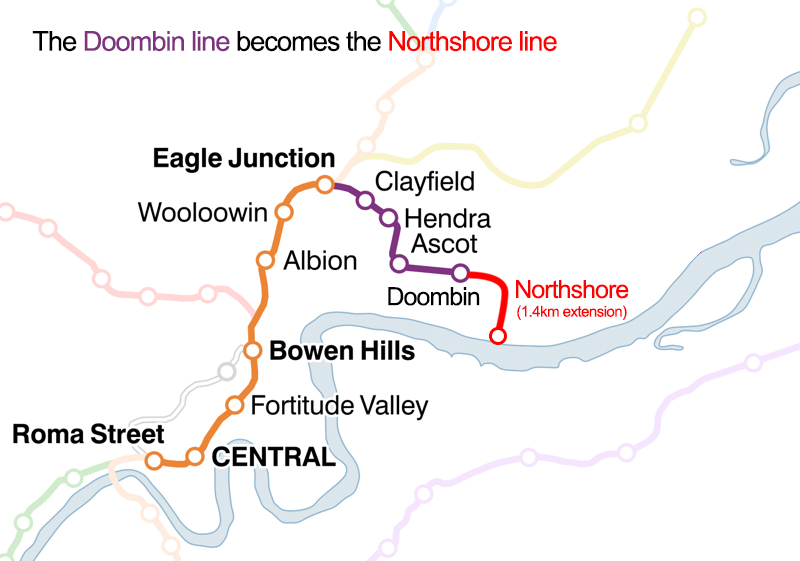
The most economically efficient option for introducing rail connectivity to the emerging Northshore Hamilton precinct involves duplicating and extending the Doomben Line.
According to rail back on track spokesman Robert Dow, a duplication and extension of the line would require no residential land resumptions and could carry an additional 30,000 people each hour.
This is a very cost effective investment and it makes absolutely no sense not to do it
Robert Dow, Rail back on track
Therefore, if the government was after a quick and cheap Northshore rail solution, this is it.
The choice of a cheaper Brisbane-Metro inspired bus rapid transit system, proves unsuitable for Northshore due to the constrained capacity of both the buses themselves and Brisbane’s arterial roads.
Furthermore, the absence of dedicated lanes for the BRT into the CBD poses additional challenges. In contrast, duplicating and extending the rail line would provide Northshore residents direct entry to the complete SEQ rail network, offering a vastly superior solution.
Brisbane Subway – A Real Rail Revolution for Brisbane
A more expensive option to connect Northshore to the rest of Brisbane’s inner-city is via a project originally conceived in 2010 by the then Bligh Government and published in the Connecting SEQ 2031 strategy document.
The Brisbane Subway project entails the creation of an underground East-West subway line, interlinking fast growing inner-city areas of Brisbane through a novel route intended to surmount the Brisbane River’s barrier. This endeavour would provide residents with fresh river crossings and transformative urban passages, notably encompassing the City-Newstead-Bulimba-Northshore zones.
• Ultra-high frequencies, with only 90 seconds needed between services for safe operations
• Closely spaced stations for higher accessibility
• Ability to turn more sharply and tackle steeper grades than the present suburban rail.
A new separate network, with separate operations to existing rail infrastructure. Supporting the expected growth and expansion of inner city Brisbane”.
Connecting SEQ 2031
After the Newman-LNP Government took office, the Labor-conceived blueprint for the Brisbane Subway was put on hold, as the focus shifted to prioritising the Cross River Rail project after the LNP were defeated. Nevertheless, there is a widespread belief that once Cross River Rail is finalised, the Brisbane Subway will emerge as the subsequent phase in the progression of inner-city rail endeavours in Brisbane. This foresight primarily stems from its potential to introduce fresh connection pathways within the inner-city.
The plan was also adopted by the Greens who have recently won three inner-city Brisbane seats at the last federal election.
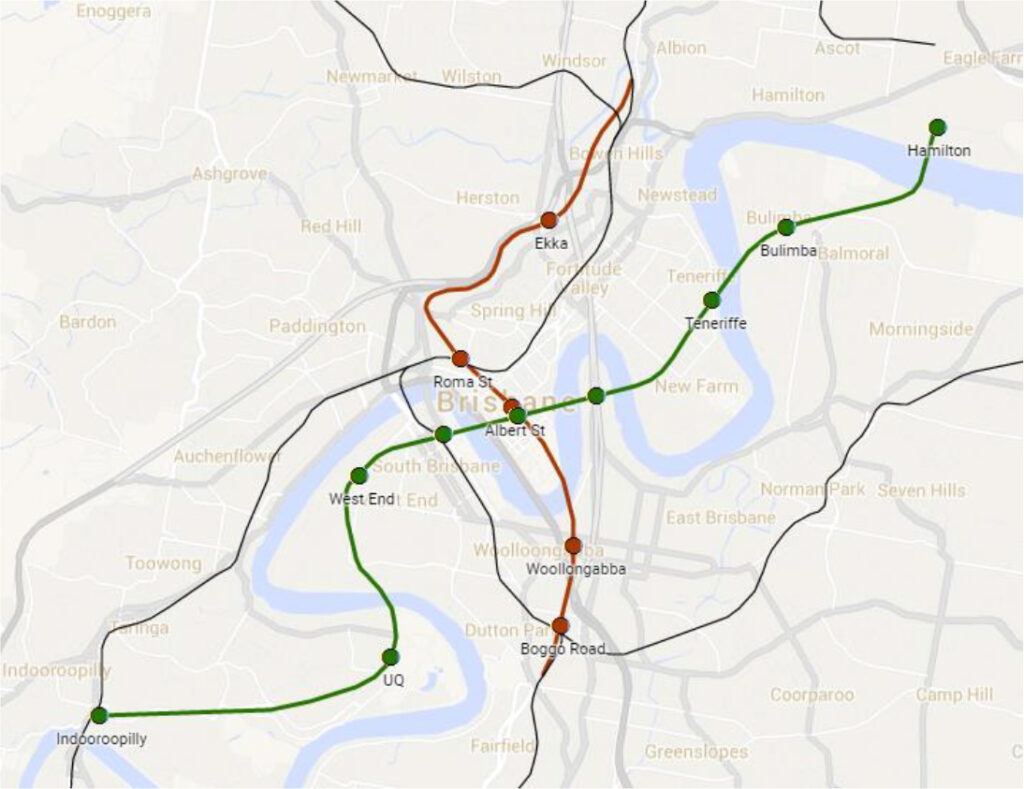
Ryan MP Elizabeth Watson-Brown, the Greens’ federal transport and infrastructure spokesperson, told the Brisbane Times last June that the concept should be back on the agenda with the starting point instead being at Indooroopilly rather than Toowong and pass under the University of Queensland at St Lucia and then travel onto West End, the CBD, Kangaroo Pt, Newstead, Bulimba and Northshore.
“Cross River Rail will be finished soon, and game-changing public transport projects take years to deliver. Where is the planning for what’s next? We should give people living both in inner and outer suburbs the freedom to leave their cars at home, or avoid the expense of owning a car.”
Ryan MP Elizabeth Watson-Brown
Back in 2016, BrisbaneDevelopment.com ran an article about this very subway line, proposing stations in high-growth areas, most of which currently are not serviced by mass transit and rely on buses.
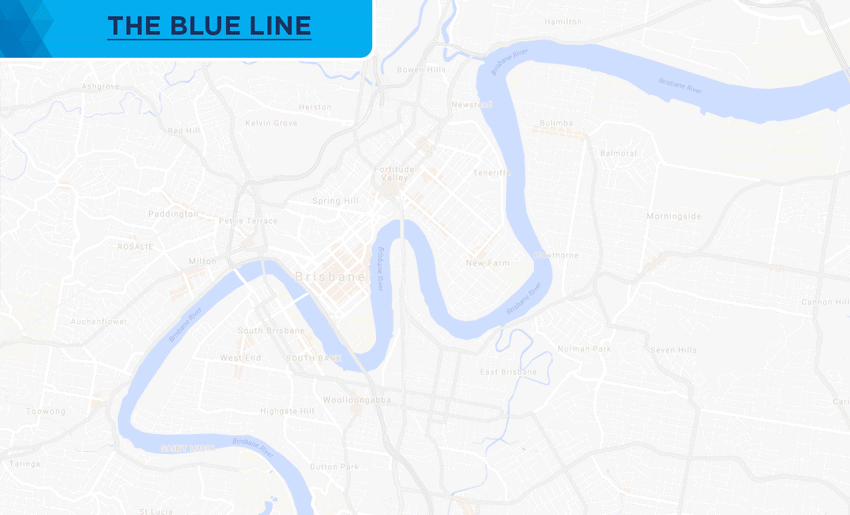
As the Olympics draw nearer, only nine years on the horizon, the Queensland Government must now take decisive steps to invest in railway expansion beyond Cross River Rail.
This urgency stems from the imperative to prevent Brisbane from succumbing to the anticipated surge in population growth within the upcoming decade. The question becomes: If not now, when?


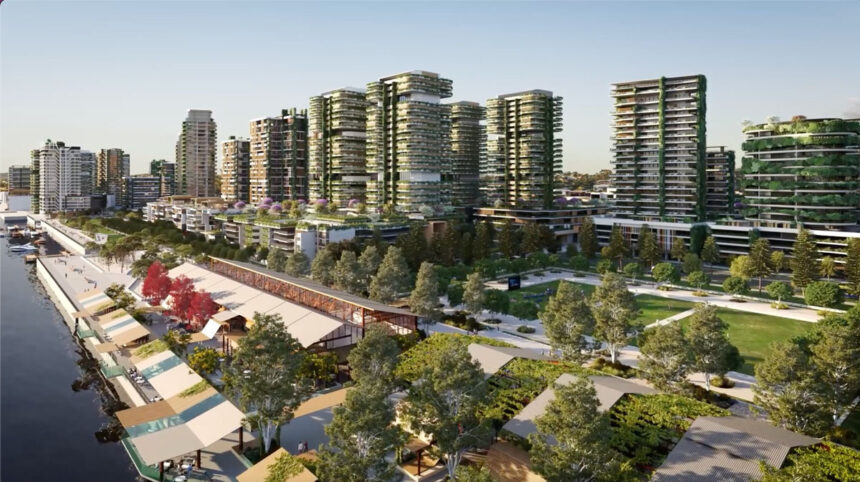
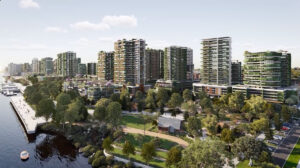
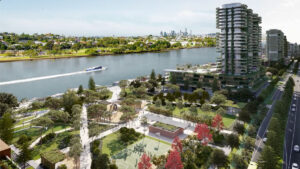
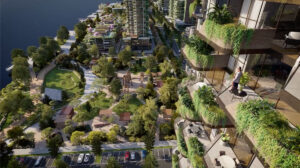
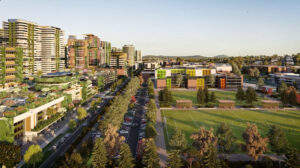
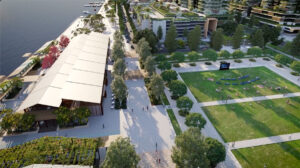
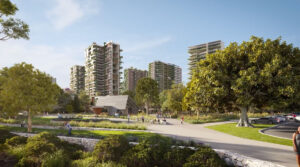
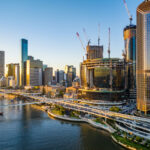
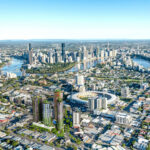





Visionary and essential.
Pretty sure the planners would have investigated the public transport service options and feasibility for this project. Maybe the ‘Northshore’ rail line does not provide a good quality PT service or match passenger journey needs. It is afterall a very long and indirect 11 station journey to the CBD based on your graphic. There would probably be major costs with duplicating the Doomben line and then building an elevated rail infrastructure over Kingsford Smith Drive. Maybe there are no more slots available on the main network to accept any additional trains coming from Northshore either.
Perhaps at this stage a cheaper, scalable, flexible and nimble bus service is a better option compared to the very expensive, slow, indirect, inflexible and visually intrusive rail option.
“Perhaps at this stage a cheaper, scalable, flexible and nimble bus service is a better option compared to the very expensive, slow, indirect, inflexible and visually intrusive rail option.”
I agree with this.
Rail in Australia and Brisbane isn’t a silver bullet, especially when it requires so much additional infrastructure. The buses are a solid solution, I’d much rather see the existing road infrastructure adapted for more buses and more cyclists and increasingly popular e-scooter devices.
I’m a little shocked that cycling was not discussed at all in this article considering the massive upgrades to the route along kingsford smith drive which in terms of Brisbane cycling, is incredibly flat and will be a much easier ride into the CBD than many of the geographically closer suburbs.
Great article team – Indeed: If not now, when!
Interesting options to consider all. I would like to add another. I like many other Redlanders work in the industrial precincts on the north side of the Gateway bridge. Going via train is not an option unless you are prepared to to an hours loop through the CBD. Redlands is growing exponentially. Linking the Cleveland line to the Airport link would substantially reduce Gateway traffic, the only option available now.
I have a further far cheaper and more sustainable option. Every single EU country currently has a birth replacement rate below the 2.1 required to sustain populations at current levels. In Japan, South Korea, China and many other Asian countries populations are decreasing. Instead of wasting money on White elephants, just decrease our immigration numbers now. After all, we can’t keep growing when all nations around us are shrinking!
So disappointing with the all the new building approvals going through that appropriate services to support the increased population are not being fully considered. Just look at all the development in Newstead, far beyond what could be termed reasonable, serviced by ferry and a glider service that is underutilised because people are using their cars instead. Added to this it’s only one lane in and out so you spend ages waiting in traffic. Not even sure how it would be attractive to live at Northshore given the increased airport traffic – certainly won’t be the heavenly place to live they will make it out to be.
Keep the rail going all the way out to the new cruise terminal
No decent public transport in place and right under one of Australia’s busiest flight paths with more than 150 planes a day flying 300m above the whole area. Sounds like the perfect spot for mass development, and continuing the legacy of poor city planning that Brisbane is known for.
This is not surprising at all. If you walk around Northshore Hamilton now it is mostly carparks. If you build a car dependent city, then people have no choice but to buy a car and drive.
Brisbane needs a nonpolitical planning body to put an end to crazy knee jerk, political and/or developer motivated white elephant, short sighted, money grubber lprojects.
Interesting piece — thanks for sharing.
The ‘East-West Growth Corridor’ illustration is a great supplement to help kick start a discussion for a public business case / feasibility study — definitely worth the investment in my opinion. My only question is why not propose to go further south and make better use of existing rail infrastructure? For example, instead of turning west from St Lucia toward Toowong/Indooroopilly, wouldn’t it be more beneficial to construct a new underground ‘Cross River Rail’ between Yeerongpilly Station to Doomben Station. That way it would effectively create:
1) A circuit line connecting 36 areas of Brisbane
2) More opportunities to improve existing rail stations (21 in total), that of which includes Yeerongpilly, Corinda, Sherwood, Graceville, Chelmer, Indooroopilly and so on;
3) 13 new underground/subway stations serving future high density development areas including Yeerongpilly, Yeronga, St Lucia, Boundary Street, South Brisbane, Albert Street (requires new platforms), Kangaroo Point, New Farm, Teneriffe, Oxford Street, Bulimba Barracks, Hamilton Wharf, and Eagle Farm;
4) Reduce existing and future proof ‘bottleneck’ congestion for Ipswich, Springwood, Beenleigh, and Gold Coast rail corridors;
5) Improved connection between Brisbane’s cultural precincts while creating opportunities for further placemaking i.e. Brisbane Markets, Queensland Tennis Centre, Lone Pine Koala Sanctuary (providing there was a pedestrian bridge linking Sherwood Arboretum), West End, Queensland Cultural Centre etcetera
Best,
Nic
This is a good opinion piece, but like the Greens ‘Subway’ proposal (and your previous 2012 opinion piece) I’m not convinced this is a solution that is needed right now. Extending the Doomben line won’t get Hamilton residents to the city any faster than an extra City Cat terminal or a dedicated Metro line (or bus priority lane) along Kingsford Smith Drive. The latter two are by far the cheaper option, and they’re local government solutions to boot. Which arguably is a better level of government to deal with urban population growth.
This idea suffers from the same issue as the ‘Subway’ proposal: duplicating existing public transport routes. There’s a reason the existing Doomben line is set back from the river; you’re just not getting good value for money adding public transport infrastructure when there’s already a river based service. Imagine the wave of ‘poor government budgeting’ and ‘riverside residents getting the lion’s share of public money’ arguments arising from this solution.
I’m not saying no to these ideas, there’s plenty of merit in them. I’d personally love to see a Doomben line extension sinking down to cross beneath Kingsford Smith Dr and link Hamilton to Bulimba via a tunnel beneath the river. But Brisbane will have to grow in density to justify such costly infrastructure investments.
The best solution for now is to leave a patch of land as a future public transport corridor within the Hamilton redevelopment area. (Bonus points for leaving another one at the Brisbane Naval Yards -since it’s being sold off and potentially going to be high density residential.) Raise this solution (and the ‘subway’ solution) in another 10 years once Brisbane’s population reaches that of Sydney.
A project like this NEEDS rail. Let’s stop cutting corners and stop developing half baked projects.
We need all levels of Government with a vision beyond their four year term and they need to think long term.
For reference take a look at what they have created in Battersea London.
Brisbane needs a circle line- something like this:
https://andrewchamberlin.wordpress.com/2013/05/05/the-brisbane-loop-world-class-public-transport-for-brisbane/?preview=true&preview_id=2&preview_nonce=645d5b27ae
The benefits of underground rail are obvious for anyone who grew up or lived considerable amount of time in the city with metro/subway.
– It connects and develops different parts of the city in a very elegant, modern and convenient way.
– The metro prepares the city for future: for its inevitable growth and sets the distributed frame. This frame will more even distribute the population and wealth.
– The metro network boosts new attractions and improves wellbeing by reducing travel time and burdens of orthodox car ownership. Think of enormous efficiency gains especially for most vulnerable: low income and younger people/families.
– it will give government an extra tool to address traffic flow issues.
– environmental emissions improvements are substantial.
Please name a 3rd largest city (like Brisbane in Australia) in any developed/developing country which does not have metro.
Brisbane needs multiple lanes of underground.
Brisbane’s population is approaching that of similar cities at the time they opened their first metro lines. For example, Singapore was about 2M residents in the 1980s when it opened the first 6km of MRT. It has now grown into one of the worlds best Metro systems and is incredibly well used. By 2040 we are projected to have 4M in greater Brisbane.
I’m a little sick of the half-assed ‘Home Brand’ budget options we keep hearing for public and active transport. We throw money at road widenings and highways, but every cent of active and public transport is scrutinised so we are left with solutions barely above MVP in every instance (unless you can slap a restaurant on top of it). But Brisbane’s culture is entrenched with cars. Public transport options cant just be functional. They need to be enticing, attractive, and user friendly. We aren’t going to get people out of cars by delivering kinda-sorta-ok solutions (most of which will get stuck in traffic anyway).
The Olympics should be a catalyst for a paradigm shift to move away from unhinged bias towards road funding and towards funding world class public and active transport infrastructure that people will use, want to use, prefer to use, are proud to say stacks up against the worlds best. If not now, then we will always be the way we are with patchwork solutions done one the cheap for anything that isn’t a motorway.
In my non-expert-but-long-term-resident opinion we need a 100 year plan to incrementally deliver 4 MRT lines in stages:
Downtown Line: Similar to Greens Subway but omitting the diversion to UQ, but with a planned extension to a Skygate interchange with AirTrain
North-South Line utilising NWTC and linking UQ and Yerongpilly directed through Paddington/Rosalie area
East-West Line from the Gap to Carina via Suncorp, VicPark, Fortitude Valley and New Farm
Circle Line at the Botanic Gardens/Indro/Ashgrove/Bulimba/Coorparoo/Yeronga kind of radius
Of course each would have strategic interchanges with each other, and only the Downtown line would add a CBD station so we improve cross town movements at every stage.
This would not be cheap, but it is the choice between more of the same and an increasingly traffic choked city that wants to cling to country town transport while growing a global city population, or leaning into being an emerging international centre to make the city a fantastic and easy place to live without drowning in cars. Invest. Incrementally. Consistently. With Determination.
We need to play the long game with an Independent Planning Authority that cuts out the political whims and antagonism between Council and State government.